Low Water Pressure Problems?
Plumbing Solutions of Idaho expert tips
Here’s What Idaho Homeowners Should Check First if Water Pressure Drops
Few plumbing frustrations compare to weak water pressure. When the shower turns from a stream to a trickle or the kitchen faucet barely rinses a dish, it’s hard to ignore. If you’re dealing with low water pressure in Boise or Meridian, you’re not alone. Many Idaho homeowners face this problem — and while some causes are simple to fix, others require professional attention.
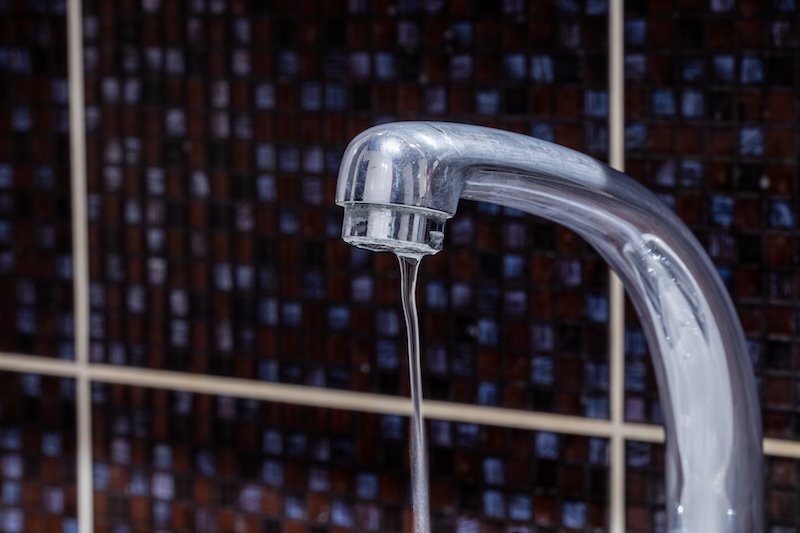
At Plumbing Solutions of Idaho, we’ve helped hundreds of local homeowners track down pressure problems that range from minor mineral buildup to full line replacements. Here’s a practical checklist you can use to identify where the issue starts and when it’s time to call in a pro.
Step 1: Check Multiple Fixtures
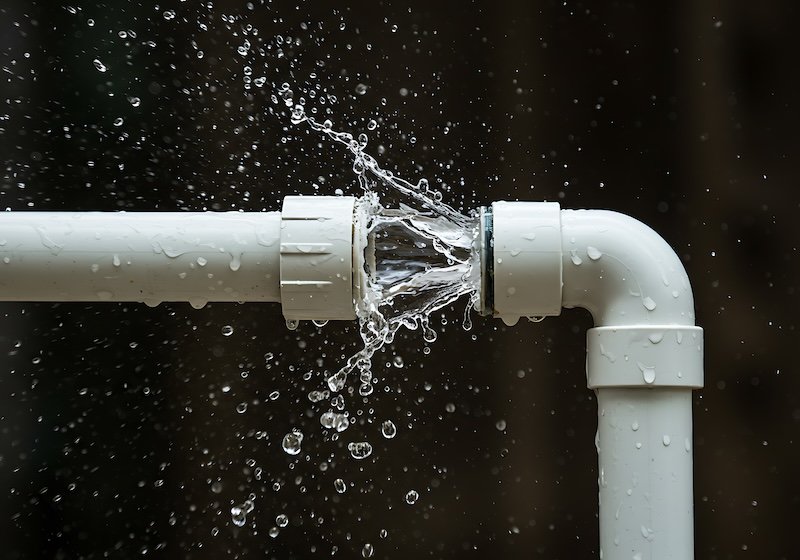
Start by figuring out whether the issue affects one faucet or the entire home. If only one tap produces low flow, the problem likely sits inside that fixture — such as a clogged aerator, showerhead, or internal valve.
If the whole house shows weak pressure, you’re dealing with something larger: a supply problem, a failing regulator, or buildup inside the plumbing itself. This first step helps narrow your focus before you start taking anything apart.
Step 2: Clean Faucet Aerators and Showerheads
In the Treasure Valley, our water contains minerals like calcium and magnesium that accumulate over time. These deposits can clog tiny openings in aerators and showerheads.
Remove the fixture, soak it in white vinegar for about 30 minutes, then scrub away any residue. Rinse, reinstall, and test again. This quick cleaning often restores normal pressure — and it’s an easy DIY win before calling a plumber.
Step 3: Confirm the Main Shutoff Valve Is Fully Open
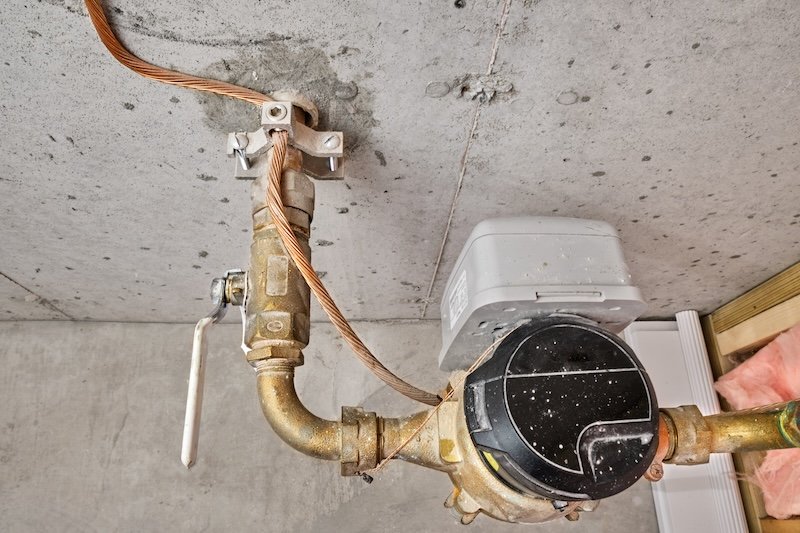
Sometimes low pressure has a surprisingly simple cause: the main shutoff valve isn’t completely open. If you recently had plumbing work done, yard maintenance, or utility repairs, the valve may not have been turned back to its fully open position.
Locate the main valve (usually near where the water line enters the home or next to your meter) and turn it counterclockwise until it stops. Even a partially closed valve can cut water flow significantly.
Step 4: Compare Hot and Cold Water Flow
Run both hot and cold taps. If you notice low pressure only on the hot side, your water heater might be the culprit. Sediment buildup inside the tank can restrict flow, especially if the heater hasn’t been flushed in years.
In that case, it’s best to schedule a professional service. We flush tanks, inspect lines, and clear sediment safely without damaging the unit. Ignoring buildup shortens the heater’s lifespan and increases energy costs.
Step 5: Inspect the Pressure Regulator
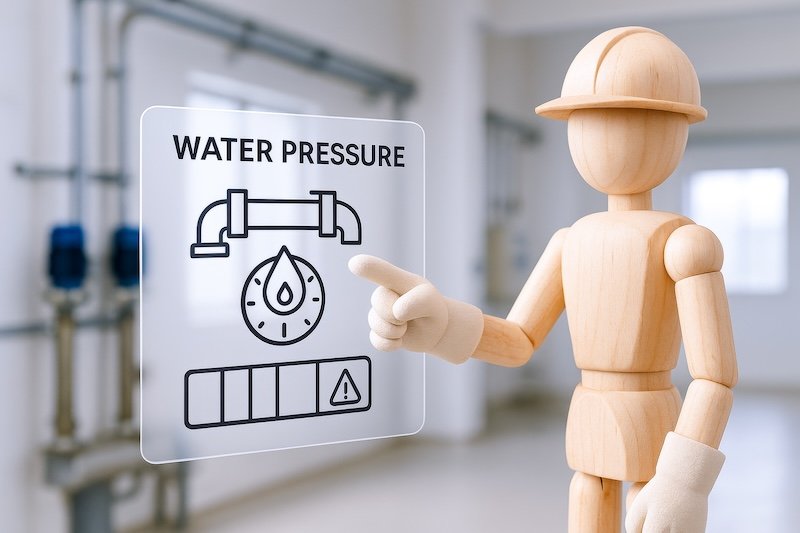
Most Boise and Meridian homes use a pressure-reducing valve (PRV) — a bell-shaped device near where the main line enters the home. This regulator keeps water pressure consistent, usually around 50–60 psi. When the PRV fails, you might notice sudden drops in pressure or, in some cases, water hammer or surging.
If you suspect the PRV, don’t try to adjust it without the proper tools and gauges. Over-tightening or misadjusting can cause leaks or burst pipes. We test and calibrate regulators to ensure they deliver steady, safe water flow throughout the home.
Step 6: Look for Hidden Leaks
In most cases, leaks reduce water pressure by diverting flow before it reaches your fixtures. You might not see water pooling anywhere, but you can test for leaks easily:
- Turn off all water-using appliances and fixtures.
- Check your water meter — note the reading.
- Wait 30 minutes and check again.
If the reading changes, water is escaping somewhere. Common hidden leak zones include underground lines, slab foundations, and supply lines leading to outdoor spigots. Our plumbers use acoustic and pressure testing to locate and repair leaks precisely, minimizing damage and wasted water.
Step 7: Check the Municipal Supply
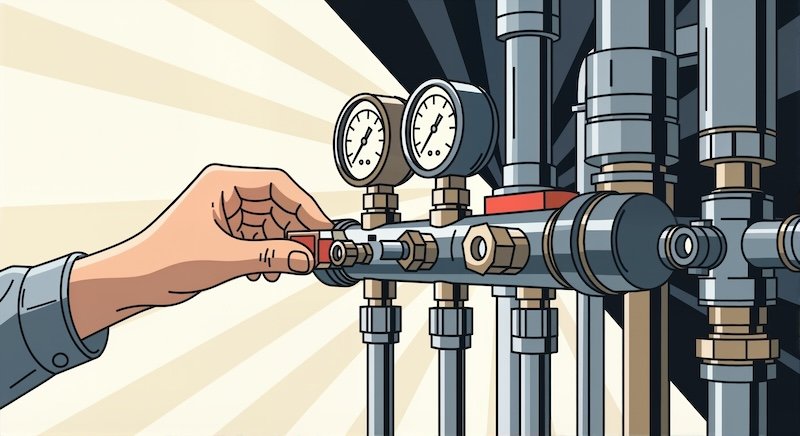
Sometimes the issue doesn’t start in your home at all. Boise and Meridian both maintain public water systems that can experience maintenance work, main breaks, or seasonal changes in supply.
Before tearing into your plumbing, call your local utility to ask whether others in your area have reported low pressure. If it’s a city issue, it often resolves within hours or days.
Step 8: Evaluate Your Pipes for Corrosion or Buildup
Older homes in Boise’s established neighborhoods often have galvanized steel pipes that corrode internally. Over time, rust and mineral deposits narrow the interior diameter, reducing flow. Even if your faucets look fine, the pipes behind your walls could be restricting water.
We can perform camera inspections or flow-rate testing to confirm whether buildup or corrosion is responsible. If so, partial or full re-piping with modern PEX or copper tubing may restore full pressure and protect your plumbing system for decades to come.
Step 9: Check Outdoor Fixtures and Irrigation Systems
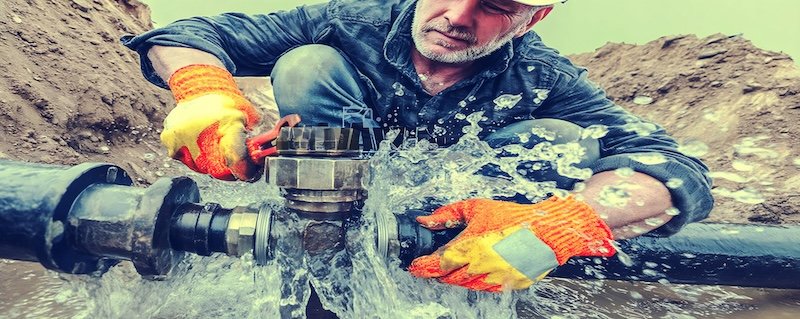
If you notice weak flow only outdoors, your irrigation system or hose bib may need attention. Check for kinked hoses, clogged filters, or damaged sprinkler valves. Outdoor plumbing sits exposed to Idaho’s freeze-thaw cycles, which can crack fittings and create partial blockages.
We often see homeowners chase indoor plumbing issues that actually start with an unnoticed irrigation problem. Always test both indoor and outdoor fixtures when diagnosing pressure loss.
Step 10: Know When to Call a Professional
Some issues fall outside the typical homeowner checklist. If you’ve checked the basics and still can’t pinpoint the cause, it’s time for professional help. Persistent low water pressure can indicate problems such as:
- A failing well pump (for rural properties)
- Severe internal pipe corrosion
- Malfunctioning PRVs or municipal regulators
- Undetected underground leaks
- Partial blockages caused by debris or scale
Our licensed plumbers use specialized gauges and inspection tools to isolate the source quickly. Once we locate the problem, we’ll provide clear repair options and up-front pricing.
Why Low Water Pressure Matters

Weak water flow might seem like an inconvenience, but it can signal deeper issues. Low pressure strains appliances like dishwashers, washing machines, and water heaters. It can also reduce fixture performance and efficiency. In some cases, it points to a small leak wasting hundreds of gallons per month.
Addressing the cause early keeps your plumbing system healthy and helps you avoid more costly repairs later.
Preventing Pressure Problems
You can avoid most low-pressure surprises by keeping your system in good shape year-round. We recommend:
- Flushing your water heater annually to prevent sediment buildup.
- Scheduling routine plumbing inspections every two to three years.
- Installing whole-house filtration to reduce mineral deposits.
- Replacing old, galvanized lines before they fully corrode.
- Monitoring water pressure with a home gauge if you notice changes.
- Small preventive steps make a big difference, especially in Idaho’s hard-water environment.
Your Local Experts in Boise and Meridian
At Plumbing Solutions of Idaho, we specialize in diagnosing and resolving low water pressure problems in Boise, Meridian, and throughout the Treasure Valley. Whether you need a simple valve adjustment, a regulator replacement, or a full system evaluation, our team will find the root cause quickly and fix it right.
We know how local water conditions, seasonal temperature swings, and hard-water minerals affect plumbing systems. That local knowledge helps us tailor every repair or upgrade for long-term reliability and better pressure performance.

If your water pressure has dropped or fluctuates without warning, don’t ignore it. Call us today to schedule an inspection. We’ll restore your water flow — and your peace of mind.
About Plumbing Solutions of Idaho in Meridian, Idaho
Plumbing Solutions of Idaho is your trusted local plumber in Meridian, Idaho, offering expert plumbing services to the Treasure Valley. Whether you need help fixing toilets, repairing leaks, or handling complex plumbing issues, our team of experienced plumbers is here to provide fast, reliable, and affordable solutions. We specialize in residential and commercial plumbing services, ensuring that your plumbing systems are functioning at their best. As a top choice for plumbing services in Boise and the surrounding areas, Plumbing Solutions of Idaho is committed to delivering exceptional service with a focus on customer satisfaction. Contact us today for all your plumbing needs in Meridian, Boise, and beyond.